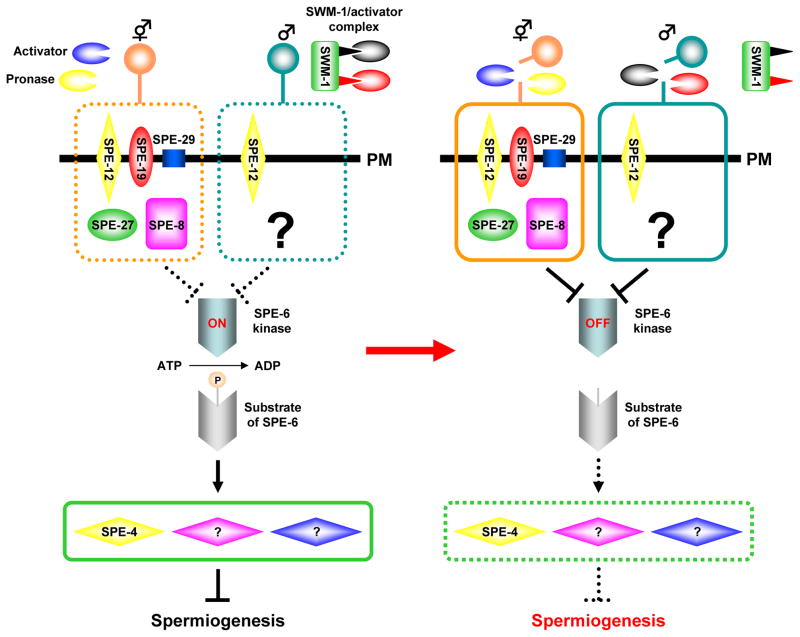Fig. 4.
Two predicted pathways for spermiogenesis. Spermatids from hermaphrodites and males probably each have a distinct pathway for spermiogenesis. One pathway is spe-8 class-dependent (surrounded by broken or solid orange line) and another is spe-8 class-independent (broken or solid light blue line). A decision to utilize either pathway might depend on activators that are sex-specific. The spe-8 class-dependent pathway seems to be stimulated by a hermaphrodite-derived activator(s) or the serine protease mixture Pronase, whereas male-derived serine proteases that are targets of the trypsin inhibitor-like protein SWM-1 utilize the spe-8 class-independent pathway. To initiate spermiogenesis, these activators might be required to cleave a certain cell-surface protein(s). There seem to be other possible ways to initiate spermiogenesis. For example, serine proteases targeted by SWM-1 might process a precursor protein(s) of the actual activator(s) for spermiogenesis. The SPE-6 kinase is downstream of SPE-8 class proteins and is one of the common points between these two pathways. This kinase phosphorylates (shown as “P” in a light orange ball) unknown substrate(s), and the phosphorylated protein then plays a role in signal transduction to block onset of spermiogenesis. The signal might affect the SPE-4 presenilin and presumably other proteins (purple and blue diamonds; the precise number is unknown). During spermiogenesis, SPE-6 activity is reduced so that negative regulatory proteins such as SPE-4 cannot function to block spermiogenesis. In this figure, the active and inactive status are shown by solid and broken lines, respectively. Thick, black arrows represent positive regulation, whereas negative regulation is expressed by T-shaped lines. PM, plasma membrane.

